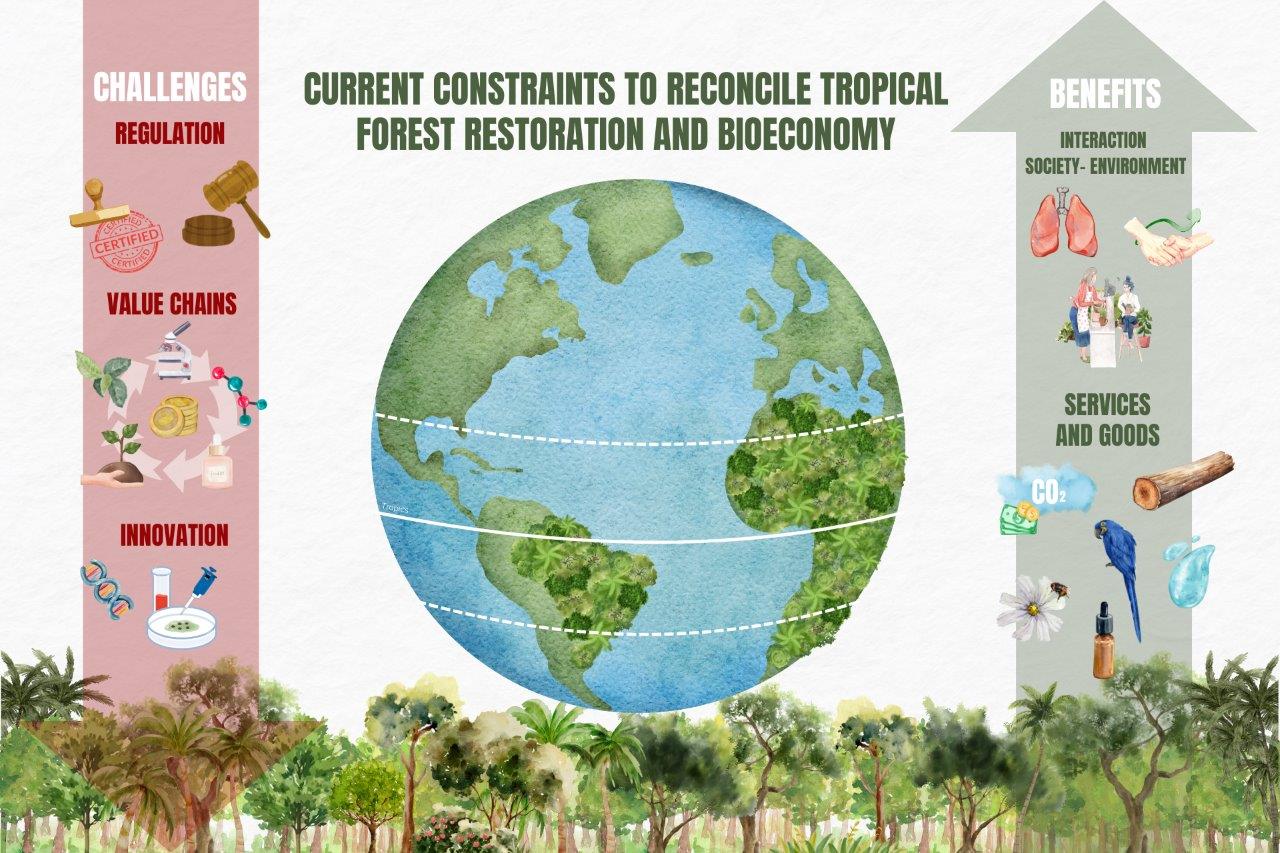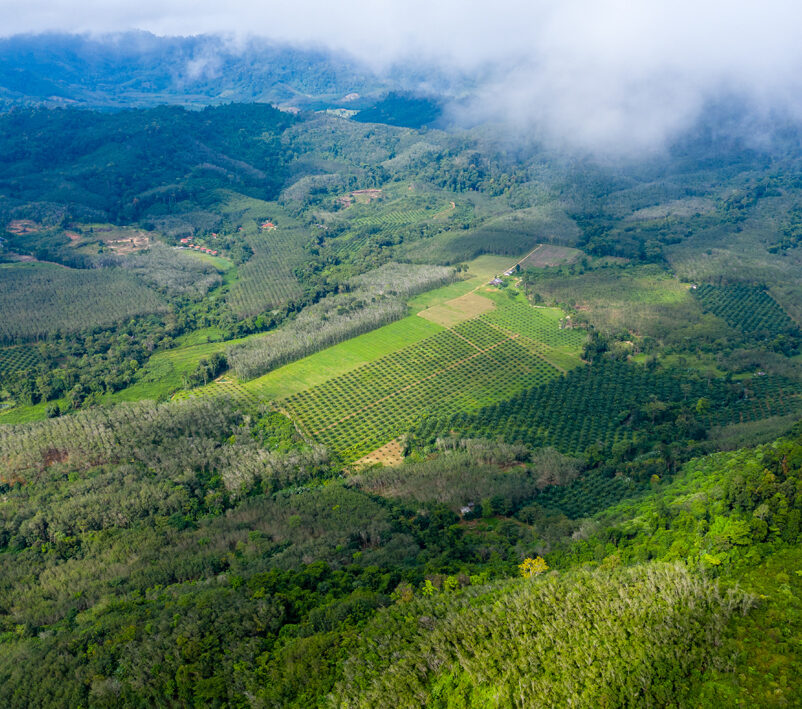Integrating bioeconomy principles into tropical forest restoration can deliver both environmental and economic benefits.
The researchers highlight the potential of agroforestry systems and native species restoration to combat global change impacts while providing greater financial returns than other land uses.
A recent study published on October 22nd in the peer-reviewed Springer-Nature journal Sustainability Science explores the challenges and opportunities of integrating bioeconomy principles into large-scale tropical forest restoration. Sergio de Miguel, head of the CTFC’s Global Forest Ecosystem Research Group and professor at the University of Lleida, is the corresponding author of the paper titled “Current constraints to reconcile tropical forest restoration and bioeconomy”, which presents a comprehensive analysis of how technology and innovation can make forest restoration more viable economically, particularly in the tropics.
Bioeconomy refers to the use of biological resources to drive sustainable economic, social, and environmental development. Forest restoration, when aligned with bioeconomic principles, can create new opportunities for both environmental recovery and economic growth. This way, the research team analyzed how the use of technology and innovation could make large-scale forest restoration viable. They looked at innovative examples like native timber production, non-timber forest products, and biotechnical products (such as chemical compounds used in pharmaceuticals) as well as intangible ecosystem services such as carbon capture, soil protection, and biodiversity conservation.
“Forest restoration is one of the most viable and effective strategies to face anthropogenic climate change”, said Pedro Krainovic, post-doctoral researcher at the University of São Paulo (USP) and the article’s leading writer. “When forest restoration is implemented with native species, it promotes multiple positive associated benefits, with high capacity for socioeconomic impact, and even better, with the supply of these associated benefits on a long term.”
The researchers presented some examples that quantify financially the benefits of restoration projects. In certain parts of the Brazilian Amazon, agroforestry systems can be more profitable than livestock farming or soybean cultivation. At the same time, agroforestry systems can help to recover ecosystem functions in restored areas. In terms of profit comparisons, a hectare of pasture generates between US$ 60.00 and US$ 120.00 per year, while soybean cultivation faces high fluctuations, with peaks ranging between US$ 104.00 and US$ 135.00 (sometimes with negative results). On the other hand, the study found data showing that the harvest of non-timber products in agroforestry systems can yield between $300 and $650 per hectare annually. These findings underscore the potential for forest restoration to deliver both ecological and economic benefits.
Some of the public policies suggested by the authors to encourage bioeconomic forest restoration include: tax incentives and access to credit; the implementation of a certification seal for sustainably sourced products; a pledge to achieve ecological objectives in addition to economic ones; and a public purchasing policy to capitalize the products from restoration on the markets.

The authors also reinforced that they are pointing to yet another alternative to implement forest restoration. “We made the case for bioeconomic forest restoration with the goal to highlight that, even with the urgent need to add value to the standing forest, biodiversity and the use of native species are essential; without forgetting the relationship with the people who occupy the territories and the need for public and private encouragement in a combination of factors”, Krainovic stated.
The paper emphasizes that bioeconomic restoration is a promising path forward, but it requires collaboration between public and private sectors, local communities, and a commitment to biodiversity and native species. “This study provides a clear roadmap for how forest restoration can contribute to both socioeconomic development and nature-based solutions to global change impacts” explains Sergio de Miguel, corresponding author of the paper.
Further information:
Krainovic, P.M., Brandão, D.O., Resende, A.F. et al. Current constraints to reconcile tropical forest restoration and bioeconomy. Sustain Sci (2024). https://doi.org/10.1007/s11625-024-01573-8
Last modified: 22 October 2024










